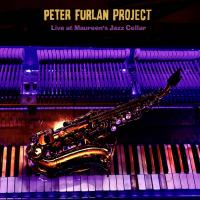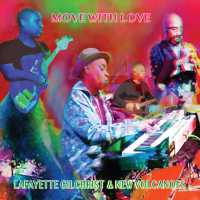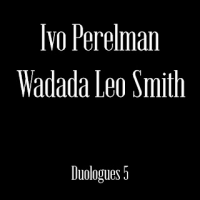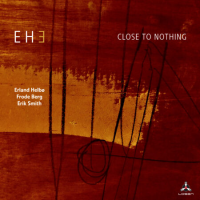Home » Jazz Articles » Album Review » Joe Harriott Quintet: Free Form & Abstract Revisited
Joe Harriott Quintet: Free Form & Abstract Revisited
Coleridge Goode was the bassist in the quintet which recorded what are arguably Joe Harriott's two most remarkable albums, the newly reissued Free Form (Jazzland, 1961) and Abstract (Columbia, 1963). Do not be put off by the dry track titles; this is hard-swinging, lyrical music for the head, heart and feet. The group's trumpeter is Shake Keane, who migrated to London from another Caribbean island, St Vincent, while pianist Pat Smythe and alternating drummers Phil Seaman and Bobby Orr were white Britons. All six were among the cream of London jazz musicians of the era.
In August 2021, Free Form and Abstract were reissued together as Free Form & Abstract Revisited, a 2 x CD set in the ezz-thetics label's Revisited series, which is devoted to curating and remastering landmark avant-garde albums of the 1960s. Harriott is in distinguished company, for most albums in the series are by American royalty such as John Coltrane, Albert Ayler, Sun Ra and Archie Shepp. Harriott deserves his place among them.
During his lifetime (he passed in 1973, aged just 44 years), Harriott was routinely described as Britain's version of Ornette Coleman. The description is a stereotypical example of journalistic laziness. Yes, both musicians played alto saxophone, emerged around the same time, and were visceral players who pushed against stylistic convention. But there is no mistaking the sound of one for the other. While Coleman was rooted in the blues, Harriott came out of bop and hard bop with side orders of calypso and mento. He was also concerned with stretching form rather than jettisoning it.
Again unlike Coleman, who never strayed far from his comfort zone, Harriott was up for playing in a wide variety of musical contexts. In the early 1960s, for instance, he was a mainstay of bands led by the pianist Michael Garrick which experimented with fusing poetry and jazz. Coleridge Goode often joined him, as did Shake Keane, whose first name was derived from his school years' nickname, "Shakespeare," bestowed for his love of literature and poetry. During the same period, Harriott performed and recorded convincingly in the traditional New Orleans-style band led by trombonist Chris Barber. Later in the decade, he co-led with violinist John Mayer the raga-based band Indo-Jazz Fusions.
Harriot was a cerebral figure who did not suffer fools gladly. In that regard he was a bit like his fellow iconoclast Thelonious Monk. Coincidentally, a photo exists of Monk and Harriott huddled together in Germany in the mid 1960s, their paths having crossed on tour. Monk appears to be laughing at a joke Harriott has just made.
To think of Harriot "just" as Britain's Ornette Coleman is to miss much else about him. To learn more, check the excellent one-hour YouTube clip below, which is a recording of a 2017 BBC Radio 3 documentary hosted by alto saxophonist Soweto Kinch (the first couple of minutes are missing but that is of no concern). Interviewees include several of Harriott's contemporaries including an archived conversation with Coleridge Goode, who passed in 2015, aged one hundred years.
Track Listing
Formation; Coda; Abstract; Impression; Straight Lines; Calypso; Tempo; Subject; Shadows; Oleo; Modal; Tonal; Pictures; Idiom; Compound.
Personnel
Joe Harriott
saxophoneShake Keane
trumpetPat Smythe
pianoColeridge Goode
bassBobby Orr
drumsPhil Seaman
drumsFrank Holder
bongosAdditional Instrumentation
Shake Keane: flugelhorn; Phil Seaman: drums (1-8, 13-16); Bobby Orr: drums (9-12); Frank Holder: bongos (9, 10).
Album information
Title: Free Form & Abstract Revisited | Year Released: 2021 | Record Label: Ezz-thetics
Tags
PREVIOUS / NEXT
Support All About Jazz
 All About Jazz has been a pillar of jazz since 1995, championing it as an art form and, more importantly, supporting the musicians who make it. Our enduring commitment has made "AAJ" one of the most culturally important websites of its kind, read by hundreds of thousands of fans, musicians and industry figures every month.
All About Jazz has been a pillar of jazz since 1995, championing it as an art form and, more importantly, supporting the musicians who make it. Our enduring commitment has made "AAJ" one of the most culturally important websites of its kind, read by hundreds of thousands of fans, musicians and industry figures every month.

























